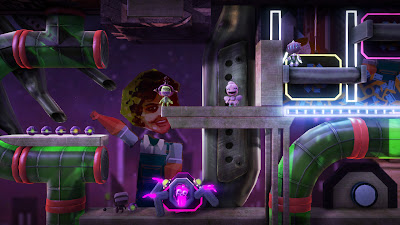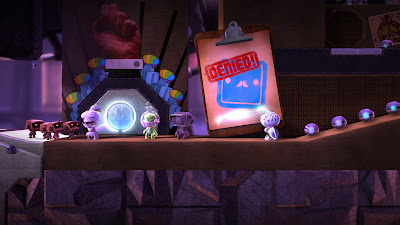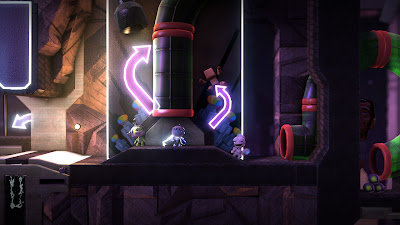Perhaps what is so surprising about this sequel, is that it manages to rectify a whole lot of problems found in the original creating a vastly more polished experience overall. Playing the brief demo for Kane & Lynch 2: Dog Days is quite an eye-opener when you look at just how much has been changed, and that what you have standing right in front of you is a largely different game on the whole.

Rather than resting on their laurels IO Interactive have managed to address many of the issues and concerns we had about K&L whilst also expanding on the atmosphere which worked so well the last time around with a new unique look that is as gritty and grimy as the game’s two lead protagonists. Set deep within the chaos of the Hong Kong underground, the developers have created a more tightly controlled, intense kind of game; a fast-paced third-person shooter reminiscent of a good John Woo actioner, making things all the more enjoyable as a result.
One of the main improvements with this sequel is that it runs a staggering 60 frames per-second most of the time, with only a few expected bouts of slowdown. The use of having such a high frame rate goes beyond making the game look reasonably impressive compared to the original, instead also improving the controller responsiveness and providing faster paced action overall. Upon booting up K&L2 this is immediately obvious; running around and swiftly getting that first headshot is faster and more immediate than before. Your level of control is improved not only in how quickly you can react, but also how accurate you can become at high speed.

Changes to the cover system also help in maintaining this fluidity. It is now possible to quickly move in and out of cover by pushing the ‘Cross’ button, or to move out by pushing on the analogue stick in the opposite direction to whatever your wedged hard up against. The system works pretty well, and is an improvement over the first Kane & Lynch, although isn’t as responsive or as manoeuvrable as the one found in Gears of War and Uncharted 2. I didn’t have any problems getting into cover, and then popping out and blasting a few enemies in the face before running towards the next suitable spot after a few minutes of play. Although things could be improved as there were times when I’d become stuck for a brief second or so in cover after pushing the required button to dislodge myself.
Gameplay-wise K&L2 is a much faster paced affair than the original. It really feels like the developers at IO Interactive have taken a leaf from Call Of Duty’s rulebook, specifically Modern Warfare’s. The way enemies pop up from behind cover and move between areas in order to flank you appears much like in Infinity Ward’s title. The same thing applies when they accurately take aim and attempt to gun you down with varying degrees of success, with foes constantly bestowing damage upon you if you get too careless, adding even more to the game's atmosphere and attempt at realism. Surprisingly, the constant duck and cover, run and gun nature of the game works very well, never feeling tired or strained throughout the limited time offered in the demo.
The action isn’t quite as furious as it is in Infinity Ward’s title, although is very smooth, and incredibly polished at the same time. Originality though is the one thing the game lacks, and in this case there’s very little outside the YouTube style presentation to set it apart from other comparable titles. Except perhaps the framerate, which improves things to no end, fully justifying the steep graphics cutbacks that have occurred in making this possible.

If there is one major complaint to be found however, then it’s with regards to the enemy AI. During various points throughout the demo I had several enemies jump out from behind cover and begin to run circles around Kane, while at the same time I could stay in my current cover position gunning them down as they did so. Not only that, when going around in circles they effectively failed to attack either me or my partner, instead looking like they had gone a little bit mad in the process.
This definitely needs to be cleaned up before release as not only does it make the game look a bit silly, it also breaks some of the atmosphere in the process. What they need to do is keep in some of the cool stuff; like how enemies pop in and out of cover, quickly moving to different spots trying to flush you out, whilst getting rid of the annoying glitches that break the illusion of a intensely staged gunfight.
Some of the NPC’s also suffer from quite stilted and stiff animations. These look rather outdated and much like the kind found in various on-rails arcade shooters. However, both lead characters move with much greater fluidity and rarely suffer from the same problems, with only occasional animations that appear out of place, or a little odd.

Visually, K&L2 looks reasonably impressive with regards to its smooth framerate but also has issues in other areas, mostly surrounding the game’s incredibly soft, and often fuzzy look. It is apparent that in order to achieve 60fps that the developers have sacrificed overall screen resolution, and in that respect the game falls down. K&L2 is decidedly sub-HD, with upscale artefacts being visible at most times and jaggies crawling the many clean lines on display. The varying inclusion of different filters used to create a security camera style look to the game, although a pretty nice touch adding even more atmosphere to the game, also do little to hide the low rendering resolution, and instead make things appear even softer and more undefined.
That said the grimy, understated, YouTube-esque screen presentation of the title fits in well with the characters and world that the developers are trying to create. The shady underworld of Kong Kong isn’t meant to look vivid, saturated and full of colour, its tone instead balanced against two unattractive and vile lead protagonists who would do equally as well at playing the role of the bad guys in this experience. Another cool touch is the ‘buffering’ message displayed when the game is loading, again adding that sense of being in a live surveillance feed of sorts.

So far, Kane & Lynch 2: Dog Days is shaping up to be a huge improvement over the first game, and seems like a largely enjoyable experience from the small sample offered up to us in the demo. The much faster-paced gameplay reminiscent of a third-person Call Of Duty makes the whole package feel tighter and far more exciting than before. While the unexpected decision to target 60fps makes for a smoother, more graphically impressive and responsive game as a result.
A few flaws still remain, such as the dodgy enemy AI, and the stiff animations of the NPC’s, which feel rather outdated. But if both of these issues were ironed out by the time of the game’s release in late August, then there shouldn’t be all that much to complain about. Bar perhaps the low-resolution nature of the game, and the fact that the two lead characters are still initially as unlikeable as ever, spouting a myriad of abuse whilst keeping their stark moral indifference to the world intact.
Hopefully, IO Interactive will surprise us with that last one. This is supposed to be Lynch’s story after all - something far more personal, so we expect to see some kind of humanity to be brought to the surface of the character at some point. After all he isn’t a militarily trained killer like Kane, instead being a far more wild and uncontrolled type. Dare I say more emotional, and arguably this provides at least a good starting point to get underneath and into the inner workings driving him to this kind of lifestyle.
That is of course, if the script writing and characterisation is as good as the gameplay. But I guess we’ll just have to wait in order to find out.




































